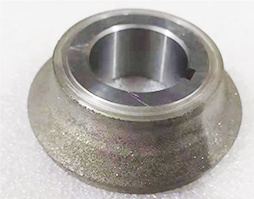Some knowledge points about diamond drill bits
Category: Industry News
Oct 22,2021
Drilling plays a very important role in various tasks of oil exploration and oilfield development. This includes searching for and confirming oil-bearing structures, obtaining industrial oil flows, identifying the area and reserves of confirmed oil-bearing structures, acquiring geological and development data related to the oilfield, and transporting crude oil from underground to the surface. All of this is accomplished through drilling. Drilling is a crucial part of the exploration and development of petroleum and natural gas resources, serving as an important means for oil exploration and development. The drill bit is a tool used in petroleum drilling to break rock and create holes, and its performance directly affects drilling quality, efficiency, and cost. According to type, drill bits can be classified intoDiamond drill bit, PDC bits, scraper bits, and roller cone bits.
Diamond drill bits refer to those that break rock by embedding diamond particles in the body of the bit. Diamonds are known for their high hardness and wear resistance among materials. Therefore, when diamond drill bits are used in hard and highly abrasive formations, they can achieve relatively high penetration rates. Although diamonds are expensive, diamond drill bits have significant wear but also high penetration rates per bit; they remain highly competitive in today's petroleum drilling market. Currently, diamond drill bits are widely used in conventional rotary drilling, turbine drilling, and coring operations, with thermal stable polycrystalline diamond (TSP) teeth being particularly prevalent.

A diamond drill bit is an integral type of bit with no moving parts; it mainly consists of the bit body, tooth crown, hydraulic structure (including water holes or nozzles), water tank (also called flow channel), chip removal groove, measuring tools, and cutting edges (teeth). The crown part of the diamond drill bit is where it cuts through rock; its surface (working face) is embedded with diamond cutting teeth and has a hydraulic structure on its side for maintaining diameter. The body of the bit is made from steel material; the upper part connects with the drill string via threads while the lower part connects with the tooth crown base (the steel tooth crown is integrated with the body).
When operating a diamond drill bit, many diamonds on its surface act on the rock simultaneously. The action of diamonds breaking rock exhibits different characteristics depending on the nature of the rock. In plastic formations (or formations where rocks exhibit plasticity under stress), diamonds erode layers under pressure from the bit causing rocks ahead to fracture or flow plastically under torque from the bit.
In brittle formations during drilling operations, diamonds primarily function by 'breaking' rocks. The stress generated under weight on bit (WOB) and torque causes rocks beneath blades to crack along shear stress planes while forming a broken groove behind moving diamonds. In this case, the volume of broken rock is much larger than that consumed by diamonds. Rock breaking has volumetric fragmentation properties which lead to high efficiency.Diamond drill bitIn hard formations (such as flint or siliceous dolomite), drilling generally employs matrixes embedded with fine diamonds; this process resembles that of grinding wheels. Each diamond coated on a drill bit acts as a small cutting edge; thus we can view a drill bit as a tool equipped with countless edges. When penetrating into rock, sharp exposed diamond teeth micro-cuttingly fracture rocks.
Related Articles
Aug 16,2021
Mar 18,2022
Aug 16,2021
Aug 16,2021
Aug 27,2021
Aug 27,2021







